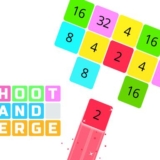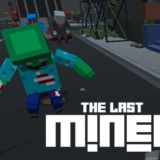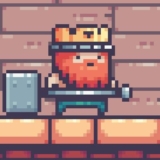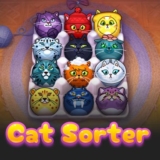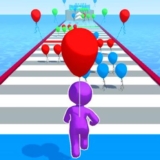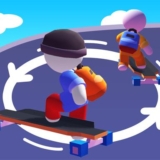Introduction and How to Play Pixel Memory
Pixel Memory is a fun and engaging memory-matching puzzle game that challenges players to test their memory skills through a series of pixelated images. The game is simple but addictive, making it a great choice for players looking to improve their focus, concentration, and cognitive skills while having fun. The objective of the game is to match pairs of images that are hidden behind tiles on the game board.
In this guide, we will introduce you to the gameplay mechanics of Pixel Memory, explain how to play, and offer tips to help you improve your memory and strategy as you advance through the game.
1. What is Pixel Memory?
Pixel Memory is a memory-matching game where the objective is to reveal and match pairs of identical pixelated images. The images are hidden behind a grid of tiles, and players must uncover them two at a time. As you progress through the game, the difficulty increases with more tiles to remember and more images to match.
The game helps sharpen memory and concentration skills, as players must recall the position of previously revealed tiles and use logic to match them with the correct ones. While the game is easy to pick up, the challenge lies in remembering the placement of the images and improving your speed in matching pairs.
2. Gameplay Mechanics
The mechanics of Pixel Memory are simple yet engaging:
- Game Board: The game is played on a grid that consists of multiple tiles. Each tile hides a pixelated image, and the goal is to find matching pairs of images by flipping the tiles.
- Flipping Tiles: To reveal the images behind the tiles, players click or tap on a tile to flip it. Once two tiles are flipped, they will either match or not. If they match, they remain face-up; if they don’t, they are flipped back face-down.
- Memory Challenge: The key challenge in Pixel Memory is remembering where specific images are located. After flipping a tile, players must rely on their memory to recall its position when trying to find a matching tile.
- Matching Pairs: The main goal is to match pairs of identical pixelated images. For example, if you flip a tile with a pixelated image of a cat, you need to find the second tile that also contains the image of the cat.
- Increasing Difficulty: As you progress through levels, the number of tiles increases, making it harder to remember their locations. Some versions of Pixel Memory may also introduce time limits or more challenging image grids.
3. How to Play Pixel Memory: Step-by-Step Guide
Here’s a simple step-by-step guide to get started with Pixel Memory:
Step 1: Choose Your Difficulty Level
Pixel Memory often allows you to select a difficulty level, which typically varies in the number of tiles (grid size). Beginners may start with a smaller grid, such as 4×4 tiles, while more experienced players can tackle larger grids, such as 6×6 or even 8×8.
Step 2: Start the Game
Once you’ve chosen your grid size, the game will present you with a grid of face-down tiles. The tiles will be flipped randomly to reveal hidden pixelated images.
Step 3: Flip Tiles to Reveal Images
Click or tap on a tile to flip it and reveal the image behind it. After each flip, try to remember the image and the tile’s location. You can only flip two tiles at a time.
Step 4: Match Pairs of Images
If the two flipped tiles reveal identical images, they will remain face-up. If they do not match, the tiles will flip back face-down. Continue flipping tiles and attempting to match the pairs until all tiles are revealed.
Step 5: Complete the Level
Once you’ve matched all the pairs on the grid, you’ve completed the level. You can then move on to the next level, which will likely present a larger grid or more challenging images.
Step 6: Time and Moves (Optional)
Some versions of Pixel Memory may have time limits or a set number of moves in which you need to match all the pairs. If there’s a time limit, aim to match the pairs as quickly as possible. If the game counts moves, try to make as few moves as possible to improve your score.
4. Tips and Strategies for Success
While Pixel Memory is primarily a game of memory, there are a few strategies that can help you perform better:
- Start with Corners and Edges: When flipping tiles, start with the corners or edges of the grid. These positions are easier to remember and will help you get a better sense of the tile arrangement early in the game.
- Focus on Patterns: Try to identify patterns in the pixelated images. While the images are abstract, certain shapes or color combinations may help you remember where specific tiles are located.
- Use Process of Elimination: If you can’t find a match immediately, use the process of elimination. After a few turns, you’ll start to remember the location of some tiles, which will make it easier to pair them up.
- Group Similar Images: If there are many similar images on the grid, group them in your mind by their features (for example, shapes, colors, or overall patterns). This can help you make educated guesses if you can’t immediately recall where a specific image is located.
- Avoid Random Flips: Don’t flip tiles randomly. Each flip should be strategic. Always try to remember the previous tiles you’ve flipped and use that information to match pairs efficiently.
- Take Breaks: If you’re playing for an extended period, it’s a good idea to take breaks. Memory games can be mentally taxing, and taking a break helps reset your focus.
5. Advanced Strategies for Higher Difficulty Levels
As you progress to higher difficulty levels in Pixel Memory, the game will become more challenging, with more tiles and potentially more complex images. Here are some advanced strategies:
- Memory Triggers: At higher levels, the images will often become more detailed. Develop a system to categorize and trigger your memory, such as focusing on specific pixel arrangements or colors that stand out.
- Use the Process of Elimination More Effectively: In larger grids, it becomes increasingly difficult to remember all the tile positions. Use the process of elimination strategically by focusing on what’s still left to be matched and narrowing down potential pairs.
- Remember Tile Positioning: As the grid size increases, it becomes more important to remember tile positions. Try to visualize the grid in sections to help break it down into smaller, more manageable areas.
- Don’t Rush: In more difficult levels, take your time with each flip. It’s easy to make mistakes when you’re rushing, so focus on accuracy and memory rather than speed.
Final Thoughts
Pixel Memory is an enjoyable and challenging game that tests your memory and concentration skills. With its simple yet addictive gameplay, the game is perfect for players who want to improve their cognitive abilities while having fun. Whether you’re just starting out or tackling advanced levels, Pixel Memory offers an exciting experience that rewards strategic thinking and memory retention.
By practicing, using memory-enhancing techniques, and developing strategies to efficiently match tiles, you’ll be able to clear levels faster and achieve higher scores. So, start playing Pixel Memory today, and challenge your memory to see how far you can go!



